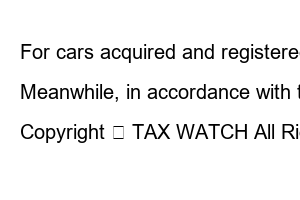다자녀 혜택Starting from November of this year, even if you have two children, you can apply for the special provision of public housing for multiple children. The Ministry of Land, Infrastructure and Transport announced on the 23rd that it will make a legislative and administrative notice of amendments to subordinate laws such as the ‘Enforcement Rules of the Special Act on Public Housing’ containing this content starting from the 28th of this month. According to the amendment, the multiple-child standard for 17 metropolitan governments across the country will be unified to two children.
This is a follow-up measure to the ‘low birth rate and aging society policy tasks and direction’ announced by the government in March. At the time, the government presented ‘care and education, work and childcare parallelism, housing, support for childcare costs, and health’ as the five key areas for implementing the policy. Currently, Korea’s total birth rate is 0.78 and the number of births is approximately 240,000 as of last year.
The key content of this amendment is to expand the eligibility to apply for special provision of public housing for multiple children from the existing three or more children to households with two children. For those with 3 or more children, 25 points will be given to 2 new children in addition to the existing 30 points for 3 children, 35 points for 4 children, and 40 points for 5 or more children.
The point distribution has also been changed: 3 people will get 35 points, and 4 or more people will get 49 points. The Ministry of Land, Infrastructure and Transport explained, “To be considerate of households with three or more children, we have adjusted the point allocation range for each number of children.”
Households with children born after March 28, the date of announcement of the low birth rate measure, will be subject to relaxed income and asset requirements of 10 percentage points per minor child when applying for public housing. For two or more children, up to 20% point relief applies. This includes fetuses as of the date of the tenant recruitment announcement and adopted children born after the date of the announcement of the measures.
The current multi-child standard, which is defined only as parents and children, has also been improved to include households with grandparents prioritized for multi-child households. Housing support has been expanded for grandparents, grandchildren, and grandchild families. According to this, households consisting of grandparents and two or more minor grandchildren are also eligible for priority provision of public rental housing for multiple children.
Standards for appropriate supply area considering the number of household members were also established. When a three-person household wishes to occupy an area exceeding 45㎡, it currently has to compete with households with one or two people, but only with households with three or more people. This allows households with many children to live in a large area.
The asset criteria for allowing public rental housing renewal excludes the value of automobiles. This is to prevent cases where people live in a rental house after purchasing an expensive imported car after moving in.
Easing standards for multiple children, being promoted by each ministry
As each ministry’s policy of easing the multiple-child standard is implemented in accordance with the government’s policy direction, benefits such as discounts on cultural facility usage fees, elementary school day care classes and child care services, and automobile acquisition tax reductions are expected to expand.
On the 16th, the Ministry of Education announced, “We will set the basic direction of easing the standard for support for multi-child households from three or more children to two children, and expand support policies related to childcare, education, and housing, which are difficulties faced by multi-child households.”
The relaxation applies to households with multiple children who use cultural facilities such as the National Theater or museums or are eligible for support for elementary school child care classes. Elementary care classes are currently operated mainly for dual-income, low-income, and single-parent families.
On the 17th, the Ministry of the Interior and Safety also announced that it was considering a plan to ease the criteria for the automobile acquisition tax exemption and reduction system from three or more children to two children for the purpose of raising multiple children. We plan to revise related laws and regulations in time for sunset next year.
For cars acquired and registered by a person raising three or more children for the purpose of raising them, the acquisition tax is reduced only for the car that applies for the reduction first, and this benefit is extended to two-child households.
If the vehicle has a passenger capacity of 7 to 10 people, the acquisition tax is fully exempted, and if the acquisition tax exceeds 2 million won, an 85% reduction rate is applied. For non-commercial passenger vehicles, acquisition tax is applied at 7% (4% for light vehicles).
Meanwhile, in accordance with the policy tasks and implementation schedule for the low birth rate and aging society, the government plans to announce lifelong education support measures considering the new elderly population, innovative measures linked to medical care and care, and a review of the overall age standards of the social security system in the fourth quarter of this year. The government said, “In addition to the core tasks, we will further review agenda items proposed by committees and all sectors.”
tax watch
Copyright ⓒ TAX WATCH All Rights Reserved.

